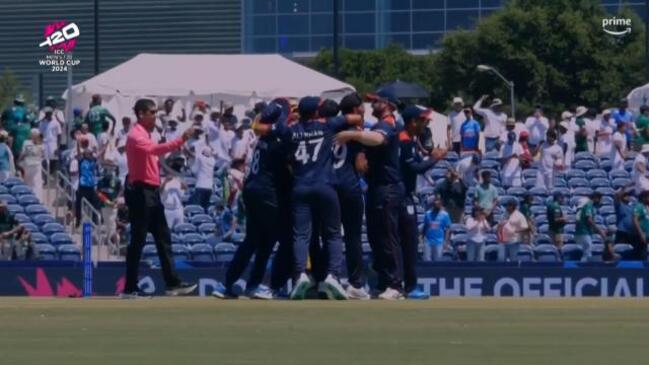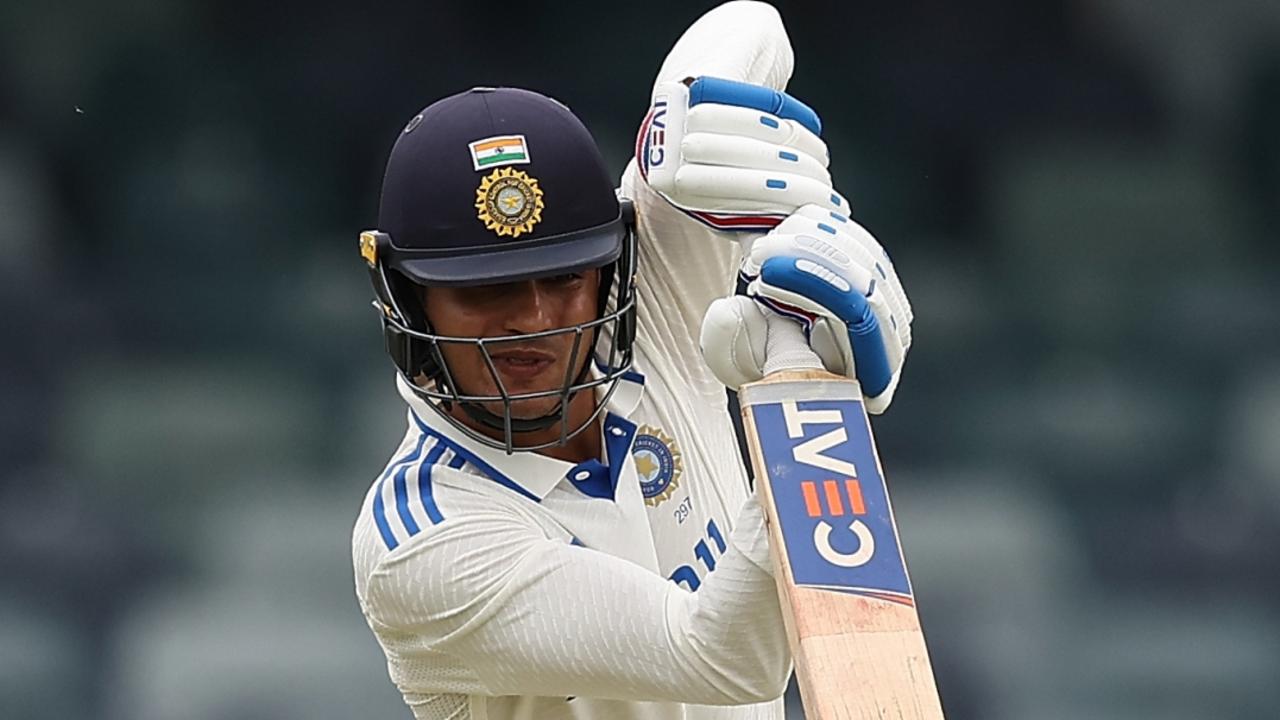What T20 World Cup has taught us about cricket’s long fight to conquer America
More than 30,000 fans flocked to watch India take on Pakistan at a pop-up stadium built in three months, but the real legacy of the T20 World Cup in America remains to be seen.

Cricket
Don't miss out on the headlines from Cricket. Followed categories will be added to My News.
It’s taken 180 years but international cricket has finally returned to its birthplace: New York.
Often lost in the sport’s storied history is the fact that the first match between countries – a low-scoring contest between the US and Canada – was played a few blocks from where the Empire State Building now stands.
This year’s T20 World Cup has brought cricket back to the US with a bang, headlined by last weekend’s sellout clash in New York between India and Pakistan, the game’s biggest rivals.
Combined with the stunning performance of America’s national team, which is well placed to progress from the group stage after knocking off Pakistan, the tournament will rank as a success in the US.
The bigger question, however, is whether cricket is here to stay this time.

The building blocks are there. The International Cricket Council estimates the US is home to 30 million fans, a market bigger than everywhere except India and the UK.
Once the World Cup finishes, stars including Australian captain Pat Cummins will stay on for Major League Cricket, the domestic T20 league, and cricket will be played at the LA Olympics in 2028.
But the sport’s administrators are having to juggle impressing cricket-loving expats with spreading the game to Americans who have never even seen the sport being played.
Brett Jones, the Australian chief executive of the World Cup’s US host committee, said his team had implemented a “two-pronged” strategy to reward supporters “who have been somewhat starved of live international cricket” while also “piquing the curiosity of new fans”.
“We’re certainly starting to cut through,” he said as he pointed to promotional efforts in collaboration with Major League Baseball and the National Basketball Association.
World Cup ambassador Yuvraj Singh also appeared on Good Morning America to give viewers a crash course alongside host and National Football League legend Michael Strahan. And readers of The New York Times would have seen a full-page ad bought by the ICC, which said “cricket has arrived” as the Statue of Liberty raised her bat.
But among the 34,000 fans who descended on Long Island in New York to watch India’s thrilling win over Pakistan, it was all but impossible to find one without a connection to either country.
An Aussie legend joins the herd 🦄 🔥 San Francisco Unicorns sign Australian Test and ODI captain, Pat Cummins for Season II of Cognizant Major League Cricket! Welcome to the league Pat 🇺🇸🇦🇺@SFOUnicorns | #MLC2024 | #CognizantMajorLeagueCricket | #T20pic.twitter.com/7R6F7F7HNh
— Major League Cricket (@MLCricket) June 4, 2024
The stadium operators appeared to know their audience. They pumped subcontinental pop music between balls and served up curries outside the ground, although the queues were far longer for all-American favourites that included chicken tenders and hot dogs.
Bruce Blakeman, the chief executive of Nassau County, which is hosting eight matches at the temporary stadium, hailed the weekend’s blockbuster as “like the Super Bowl on steroids”, with TV viewership of up to one billion people around the world.
That said, the World Cup is not being aired in the US by ESPN or any major broadcasters, depriving casual sports fans of the chance to stumble across it.
The local rights were instead snaffled up by cricket streaming service Willow and in a sign of its focus, the commercials shown during matches are mostly for Indian foods and even an Indian matrimony service.
The World Cup live site set up at the World Trade Center in Manhattan – a 50-minute train ride from the Long Island stadium – has been relatively quiet, other than the crowd of Indian and Pakistani fans who gathered after failing to secure tickets for their head-to-head clash.
Standard seats were sold for $US300 but resale platforms listed them for at least $US650 in the days before the match. Premium tickets were selling for more than $US5000.
As the US outplayed Pakistan last week, the live site was mostly dotted with unsuspecting tourists and office workers.
Matthew Botha, a 21-year-old from Utah, was the only obvious American supporter with the Stars and Stripes draped over his shoulders.

He said he was “really ecstatic” that games were being played in New York, Texas and Florida but that there was “still a way to go” to attract new American fans.
“For instance, a lot of the games are being played at 10am in the morning here in the US,” Botha said (a deal was done to put the matches on prime-time TV in India).
“So that’s not great for local audiences if they have to get off work to go to games. The tickets are quite expensive as well.”
After America’s breakthrough victory, The New York Times harshly summed up the lack of local enthusiasm with its headline: “US Scores Historic Cricket Win But Only Pakistan Notices.”
But Jones, who won an AFL premiership with the West Coast Eagles in 2006, said the World Cup was the “first part of a longer strategy” for cricket in the US. It covers everything from lifting participation rates in schools to capitalising on the MLC’s billionaire backers.
“This is hopefully a moment that provides some direction and stability to bring people together to work on a shared vision for cricket in the US,” he said.
In New York, Blakeman said that while “some people were concerned that we bit off more than we could chew”, the tournament had “exceeded my expectations”.

“We did this in less than a year,” he said, and that Nassau County was “going to make a fortune” of at least $US150 million from its role in the World Cup.
After the last game in New York on Wednesday (local time) between the US and India, the temporary stadium will be dismantled.
It was built in just 100 days using grandstands that sat on the Las Vegas Strip for last year’s Formula One grand prix.
The drop-in pitches – which were constructed in South Australia and shipped to Florida and then Eisenhower Park in Long Island by Adelaide Oval’s head curator Damian Hough – will also be removed and reinstalled at cricket training centres around the country.
Blakeman hopes the World Cup is only the beginning for the sport in New York – or at least a new beginning.
“The way things have gone here the last couple of weeks, I think cricket has found a home,” he said.
More Coverage
Originally published as What T20 World Cup has taught us about cricket’s long fight to conquer America





